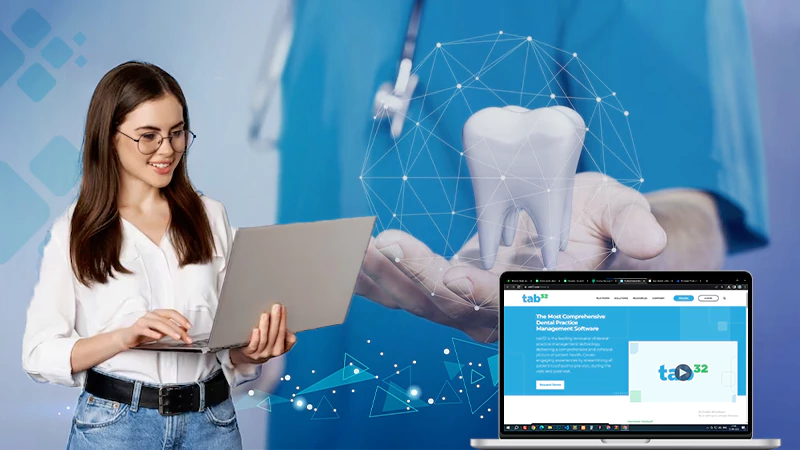Customizing Training Programs with Employee Training Software

In today’s fast-paced and competitive business landscape, employee training has become crucial for organizations to stay ahead. As technology continues to revolutionize various aspects of the workplace, it also presents opportunities to enhance training programs. Employee training software has emerged as a valuable solution, empowering organizations to customize and optimize their training initiatives.
According to a recent survey, 66% of organizations have made employee learning and development a strategic element and a critical factor for long-term success. This statistic highlights the growing recognition of the importance of training in achieving organizational goals.
And thanks to training software for employees, you can organize the company’s entire operational knowledge, turn best practices into standard operating procedures, and get every employee up to speed on their responsibilities. So, if you’re a business owner trying to leverage the benefits of employee training software, keep reading to realize how it enables organizations to create personalized training experiences.
Understanding Employee Training Software
Employee training software refers to specialized platforms or applications designed to facilitate and streamline training programs within organizations. These software solutions offer a wide range of features, including course creation, content management, progress tracking, and reporting.
They often come in different forms, such as learning management systems (LMS), virtual classrooms, or mobile learning apps. Unlike traditional training methods, the best training software for employees leverages technology to provide a more efficient and engaging learning experience.
Benefits of Employee Training Software
Enhanced Customization Options
Employee training software empowers organizations to customize training programs according to their specific needs. It enables the creation of tailored training paths, allowing employees to learn at their own pace and focus on relevant topics. Customization ensures that training aligns with business goals and individual employee development plans.
Improved Accessibility and Flexibility
Traditional training programs often face challenges related to accessibility and flexibility. Employee training software eliminates these hurdles by offering online and on-demand training modules. Employees can access training materials anytime, anywhere, using their preferred devices. This flexibility accommodates diverse learning styles and remote or geographically dispersed workforces.
Real-Time Progress Tracking and Analytics
Employee training software provides real-time progress tracking and analytics capabilities. Administrators can monitor employees’ progress, track completion rates, and identify areas where additional support may be required. These insights enable timely intervention and personalized guidance, maximizing the effectiveness of the training program.
Cost-Effectiveness and Time-Saving Aspects
By replacing traditional training methods with software solutions, organizations can reduce costs associated with travel, logistics, and printing materials. Moreover, employee training software automates administrative tasks such as enrollment, scheduling, and grading, freeing up valuable time for trainers and HR professionals.
Customizing Training Programs With Employee Training Software
Assessing Training Needs and Setting Goals
Start by identifying the training needs of your organization and employees. Conduct surveys, interviews, or assessments to gather insights into the skills and knowledge gaps. Based on the findings, define clear training goals that align with your business objectives.
Choosing the Right Training Modules and Content
Employee training software offers a wide range of pre-built training modules and content libraries. Carefully select the modules that align with your training goals and customize them as needed. Additionally, consider incorporating multimedia elements, such as videos, interactive quizzes, or gamification, to enhance engagement and knowledge retention.
Personalizing Training Paths for Individual Employees
Each employee has unique skills, experience, and learning preferences. Leverage the customization options provided by employee training software to create personalized training paths. This allows employees to focus on areas where they need the most improvement and progress at their own pace.
Incorporating Interactive and Engaging Elements
Employee training software offers a variety of interactive features to make the learning experience more engaging. Utilize these elements to promote active participation and knowledge absorption. Interactive simulations, virtual reality (VR) scenarios, and collaborative learning activities can enhance employee engagement and facilitate skill development.
Incorporating Assessments and Evaluations
Regular assessments and evaluations are crucial to measuring the effectiveness of training programs. Employee training software enables the integration of quizzes, exams, and performance evaluations. Leverage these features to gauge employee understanding, identify knowledge gaps, and track progress over time.
Best Practices for Implementing Employee Training Software

Getting Buy-In from Stakeholders and Management
Obtain support from key stakeholders and management to ensure the successful adoption of employee training software. Communicate the benefits and potential ROI of the software solution and address any concerns or objections.
Ensuring Proper Integration with Existing Systems
Employee training software should seamlessly integrate with existing HR systems, such as talent management or performance evaluation platforms. This integration ensures data consistency, reduces administrative overhead, and provides a holistic view of employee development.
Providing Comprehensive Training for Employees and Administrators
Prioritize comprehensive training for employees and administrators to familiarize them with the software’s features and functionalities. Offer workshops, tutorials, or user guides to ensure everyone can leverage the software effectively.
Encouraging Employee Engagement and Participation
Actively promote employee engagement and participation in training programs facilitated by the software. Communicate the importance of ongoing learning and create a supportive culture that encourages employees to embrace training opportunities.
Collecting Feedback and Continuously Improving the Training Program
Employee training software provides valuable data and analytics on the effectiveness of the training program. Leverage these insights to collect feedback from employees and continuously improve the training modules, content, and delivery methods.
Final Thoughts
Employee training software presents a transformative opportunity for organizations to enhance their training programs. By customizing training paths, incorporating interactive elements, and leveraging real-time analytics, organizations can create tailored learning experiences that meet employees’ unique needs.
The benefits of employee training software extend beyond customization and include improved accessibility, cost-effectiveness, and time-saving aspects. Embrace employee training software as a powerful tool to boost employee development, improve productivity, and drive organizational success in today’s dynamic business landscape.
Follow Us
Latest Post















